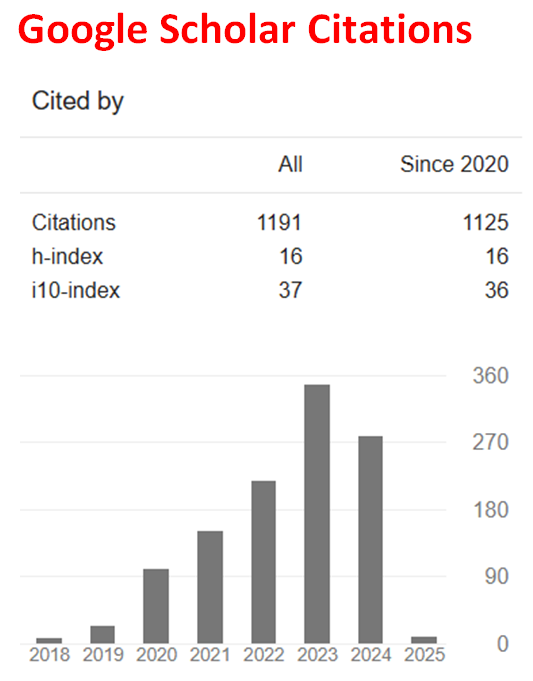Application of Optimal Control Strategies on Incidence of Medical Complications in Diabetic Patients’ Population
Abstract
Diabetes mellitus is a chronic condition characterized by elevated blood glucose levels, which can lead to severe health complications if not properly managed. The increasing prevalence of diabetes worldwide has made it a major public health concern. This study formulates and analyzes an optimal control model for diabetes management, focusing on minimizing complications and treatment costs. The model is structured around a population of diabetic patients, incorporating dynamic interactions between healthy, susceptible, diabetic, complication, and treatment populations. An objective functional is defined, integrating costs associated with complications and treatment efforts, and is subjected to optimization through control strategies aimed at enhancing patient education, regular monitoring, and comprehensive care. The application of the Pontryagin Maximum Principle provides a solid theoretical foundation for identifying optimal control strategies. Utilizing a fourth-order Runge-Kutta method, the model is simulated under varying control conditions to assess the impact of interventions. The results demonstrate that increasing control measures significantly reduces the incidence of complications while improving treatment rates. The findings highlight the importance of strategic health management interventions in mitigating the burden of diabetes-related complications and emphasize the model's applicability in real-world healthcare settings. This research provides a robust framework for policymakers and healthcare providers to devise effective strategies that enhance the quality of care for diabetic patients.
Downloads
References
World Health Organization. (2016). Global report on diabetes. World Health Organization. https://apps.who.int/iris/handle/10665/204871
American Diabetes Association. (2020). Introduction: Standards of Medical Care in Diabetes—2021. Diabetes Care, 44(Suppl. 1), S1-S2. https://doi.org/10.2337/dc21-Sint
Atkinson, M. A. (2012). The pathogenesis of type 1 diabetes: Immunogenetics and islet cell autoimmunity. Annual Review of Medicine, 63, 407-424. https://doi.org/10.1146/annurev-med-042910-135717
Mokdad, A. H., Ford, E. S., Bowman, B. A., Dietz, W. H., Vinicor, F., Bales, V. S., & Marks, J. S. (2003). Prevalence of obesity, diabetes, and obesity-related health risk factors, 2001. JAMA, 289(1), 76-79. https://doi.org/10.1001/jama.289.1.76
Legro, R. S., Kunselman, A. R., Dodson, W. C., & Dunaif, A. (1999). Prevalence and predictors of risk for type 2 diabetes mellitus and impaired glucose tolerance in polycystic ovary syndrome: A prospective, controlled study in 254 affected women. The Journal of Clinical Endocrinology & Metabolism, 84(1), 165-169. https://doi.org/10.1210/jcem.84.1.5393
Chawla, A., Chawla, R., & Jaggi, S. (2016). Microvasular and macrovascular complications in diabetes mellitus: Distinct or continuum? Indian Journal of Endocrinology and Metabolism, 20(4), 546-551. https://doi.org/10.4103/2230-8210.183480
DeSisto, C. L., Kim, S. Y., & Sharma, A. J. (2014). Prevalence estimates of gestational diabetes mellitus in the United States, pregnancy risk assessment monitoring system (PRAMS), 2007-2010. Preventing Chronic Disease, 11, E104. https://doi.org/10.5888/pcd11.130415
Aalto, A. M. (1997). Diabetic complications and health-related quality of life: A study among patients with insulin-dependent diabetes mellitus. University of Helsinki.
International Diabetes Federation. (2019). IDF Diabetes Atlas (9th ed.). International Diabetes Federation. https://diabetesatlas.org/en/resources/
International Diabetes Federation. (2023). Diabetes facts & figures. https://idf.org/about-diabetes/diabetes-facts-figures/
Derouich, M., Boutayeb, A., Boutayeb, W., & Lamlili, M. (2014). Optimal control approach to the dynamics of a population of diabetics. Applied Mathematical Sciences, 8(56), 2773-2782. http://dx.doi.org/10.12988/ams.2014.43155
Yusuf, T. T. (2015). Optimal control of incidence of medical complications in a diabetic patients’ population. FUTA Journal of Research in Sciences, 11(1), 180-189.
Permatasari, A. H., & colleagues. (2018). Existence and characterization of optimal control in mathematics model of diabetics population. Journal of Physics: Conference Series, 983, 012069
Kouidere, A., Balatif, O., Ferjouchia, H., Boutayeb, A., & Rachik, M. (2019). Optimal control strategy for a discrete time to the dynamics of a population of diabetics with highlighting the impact of living environment. Discrete Dynamics in Nature and Society, 2019, 6342169, 8pp. https://doi.org/10.1155/2019/6342169
Kouidere, A., Labzai, A., Ferjouchia, H., Balatif, O., & Rachik, M. (2020). A new mathematical modeling with optimal control strategy for the dynamics of population of diabetics and its complications with effect of behavioral factors. Advances in Difference Equations, 2020, 1943410, 12pp. https://doi.org/10.1155/2020/1943410
Ferjouchia, H., Iftahy, F. Z., Chadli, A., El Aziz, S., Kouidere, A., Labzai, A., Balatif, O., & Rachik, M. (2020). Application of optimal control strategies for physiological model of type 1 diabetes - T1D. Communications in Mathematical Biology and Neuroscience, 2020, Article ID 35.
Aye, P. O. (2021). Mathematical analysis of the effect of control on the dynamics of diabetes mellitus and its complications. Earthline Journal of Mathematical Sciences, 6(2), 375-395. https://doi.org/10.34198/ejms.6221.375395
Kirk, D. E. (2004). Optimal control theory: An introduction. Dover Publications.
Pontryagin, L. S., Boltyanskii, V. G., Gamkrelidze, R. V., & Mishchenko, E. F. (1962). The mathematical theory of optimal processes. Interscience Publishers.

This work is licensed under a Creative Commons Attribution 4.0 International License.
.jpg)

